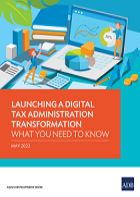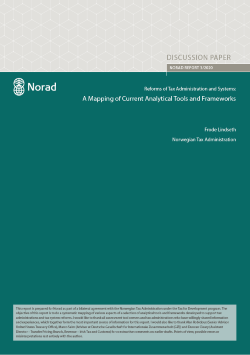Strategy, governance and new skills
The complexity of digital transformation calls for a strategic approach and a structured form of governance
The nature of digital transformation requires the joining-up of systems and processes across the public and private sector, as well as internationally. The complexity and significant resource investments required call for a strategic approach if the transformation is to succeed. Further, it requires a structured form of governance that brings together all relevant stakeholders, including from other parts of government if there is a whole-of-government approach to digital transformation.
There are many elements to developing a digitalisation and digital transformation strategy, including the understanding of the current level of digital maturity of the tax administration. Many tools and frameworks exist that can assist tax administrations in that process, including a Digital Transformation Maturity Model or the Tax Administration Diagnostic Assessment Tool (TADAT).
New skill sets will be required
As part of a digital transformation, a significant number of the tax functional processes will be run automatically (and artificial intelligence enabled) within the tax administration, including through inputs from other organisations, or within taxpayers’ natural systems. As a result, the skills required by tax administration staff will be more focussed on supporting the operation and evolution of the tax administration system as a whole. This will require an expansion in the number of IT professionals, programmers, data scientists, behavioural scientists and strategists. Tax professional roles will remain highly important, inputting to the development of domestic and international rules, the identification of possible compliance issues and dealing with more complex cases, including internationally where differences in tax rules or their application may cause issues.
A digital culture of staff engagement is important
For the digital transformation to be truly successful tax administrations need to ensure that they adopt a culture where the digital needs of taxpayers and other stakeholders are understood and embraced by staff; new services are demand driven, innovative, and created considering potential cross-functional synergies; and tax administrations projects are managed in an agile fashion.
Strategy, governance and new skills
Note: To understand fully the information included in this map, users are advised to look at the source data tables and the original survey question as some of the self-reported data may not give the full picture and may need to be looked at in the wider context of the survey.
Sources: Tables SG1, SG2, SG3 and SG4
Data tables
The following tables contain information regarding those elements that are key for a successful digital transformation.
|
Strategy |
This table contains details on the digital transformation strategies developed by tax administrations including the involvement of external stakeholders and use of data analysis and analytics. |
|
Governance |
This table provides details regarding the governance structures put in place by tax administrations to oversee the digital transformation. |
|
Skills |
This table looks at how tax administrations go about the identification of the skills required for a successful digital transformation and whether, and if so how, this has been mapped against current skills available. |
|
Culture of staff engagement |
This table has information on how tax administrations build a digital culture among their staff. |
Further information
Related Documents






